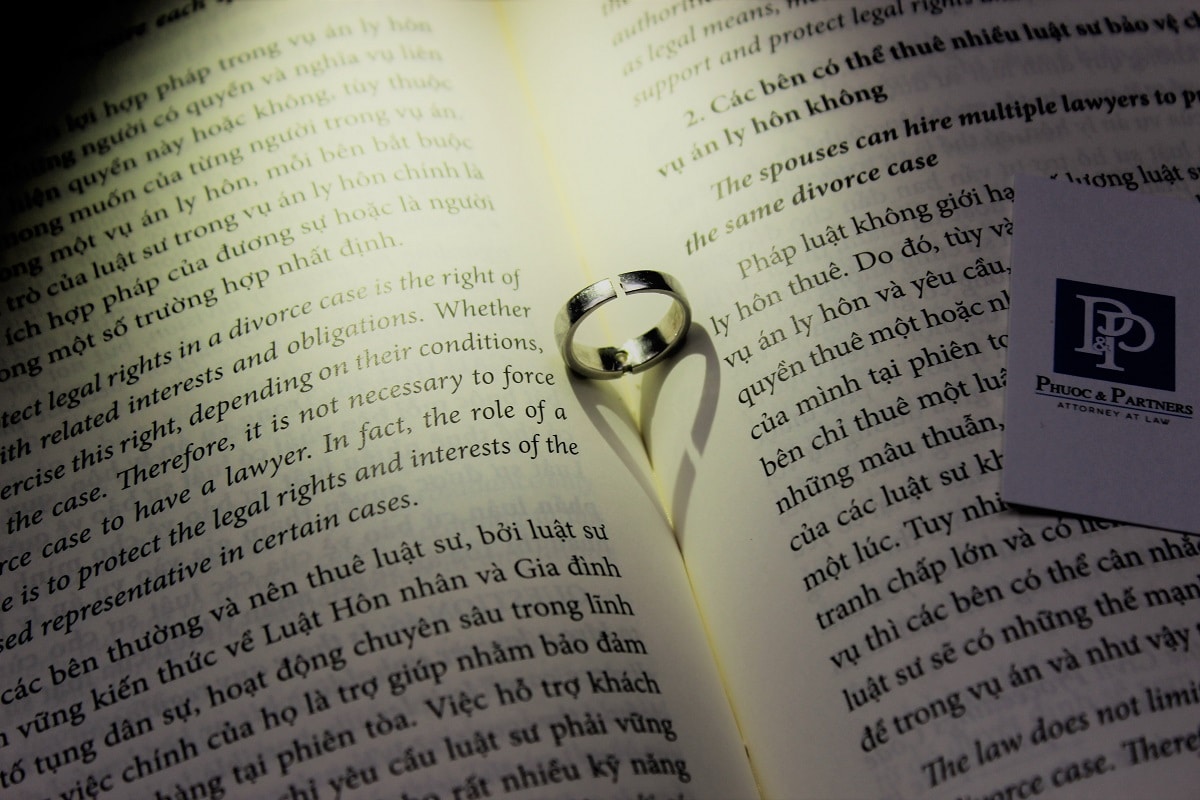As a rule, any property which is real estate with a legal ownership right before the marital period is the private property of a spouse. If there was no change in the process before and during the marriage period, which would affect this private ownership, the private ownership status would not change after the divorce.
However, if the real estate is a house under private ownership and that there has been shared use, then it is still under the private ownership of that person at the time of official divorce. If the departing spouse has difficulty in moving, then he or she is entitled to reside in the house for a duration of 06 months, starting from the date of termination of the marriage relationship, unless otherwise agreed by the spouses[2]. This provision expresses the spousal affection, even after divorce and at the same time shows the humanity in creating a place to live for a departed spouse who is struggling and by giving him or her enough time and conditions to find another suitable accommodation.
Conversely, if there is an impact of both the husband and wife to the property ownership rights, the properties could be considered as the common properties of the spouses, specifically as follows:
- Before the marital period, the spouse has established the matrimonial property regime agreement according to the provisions of law. Consequently, there is an agreement in this document stating that the properties are the common properties of the spouses so that any property formed before and during the marriage period will be considered as the common properties of the spouses;
- During the marital period, the spouses’ private properties will be merged into the common properties of the spouses as agreed by them. At that time, the spouses must make a written matrimonial agreement on the common properties of the spouses, and because it is real estate, this document must be notarised or certified by the competent notary organisation.
When either of the above cases occurs, upon divorce, if no agreement could be reached by the spouses and upon request, the Court will divide the common properties of the spouses according to the principle of common properties division and in accordance with the Law on Marriage and Family.
Currently, there is a controversial topic: if the properties are privately owned or used by a spouse but is additionally invested in and built by the spouses during the marriage period, could it become the common properties of the spouses[4]? Many people think that if they are the properties of a spouse, it is impossible to transform private properties into common properties of the spouses without his or her mutual consent. Contrary to this view, another view is that the current property value has greatly increased thanks to the joint efforts of both spouses during the marriage period. As a result, it is not reasonable to consider this as private properties of each spouse.
Despite the above arguments, it is not too difficult to identify the common properties of the spouses on the basis of classifying properties as objects under the Civil Code. A non-consumable object is an object which, after having been used many times, substantially retains its original characteristics, appearance and use functions, due to its characteristics[6]. Such an object cannot be transformed into common properties of the spouses. If the non-consumable objects are repaired, maintained, or renovated and still retain their value or that the value has increased, then this added value arising from the private or common properties of the spouses will be considered since at this time, the property is not the same as the original object. Let’s take the case of an object with its own characteristics, symbols, shapes, colours, materials, features and locations which is the private property of a spouse and is used and managed as common properties of the spouses. Over time, the value of the object increases even without the active development from both spouses. When divorced, this object, though increasing in value, is still considered to be private property, which is more reasonable because of its specific physical characteristics, which is still such object as before the marital period. However, if the object is sold, then the amount of money now (increased in number) must be considered as a common properties taking into account the efforts of the two spouses.
Facing the
above debate, the Vietnam Notary Association offered the following
solution: if during the process of
management and joint use, the value of the properties were raised and that the owner of these properties proves that the
embellishment of the properties are based on his or her private properties and
without any contribution from the other spouse, he or she shall automatically be entitled to independently dispose the properties
and vice versa. Indeed, if it could
not be proven, then according to the principle
of presumption by law, the value invested
to develop the properties are sourced from the mutual properties, the
contribution of both spouses during the marital period, so when making
transactions for these properies, it requires
approval of the spouses even if this
is still the private property of a spouse.
[2] Article 63 of Law on Marriage and Family 2014.
[4] Hoang Yen, “Entanglementt in establishing common properties of husband and wife”, Can Tho Newspaper – Social-legal section, https://baocantho.com.vn/vuong-mac-trong-viec-xac-lap-tai-san-chung-vo-chong-a111748.html.
[6] Article 112.2 of the Civil Code 2015.
If you would like more information on how we can assist you with divorce issues, please contact us at: +84 (28) 36223522 or email us at info@phuoc-partner.com

